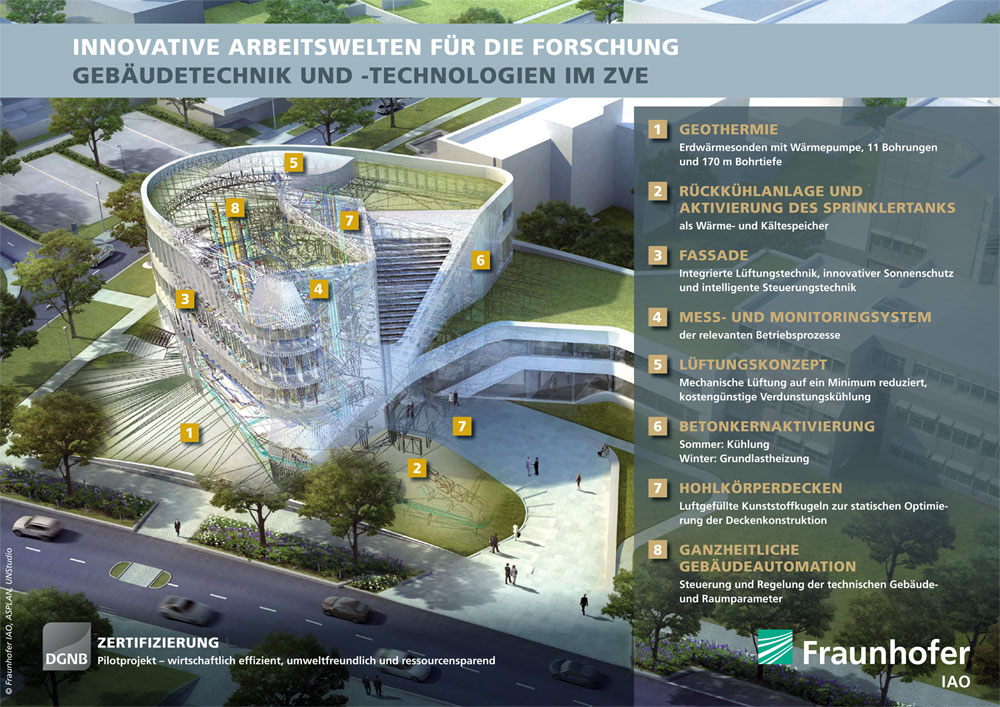Laboratories
With its ultramodern laboratories and office facilities, the ZVE is an excellent research facility for Fraunhofer IAO scientists while also providing a platform for researching, developing and testing various innovations, such as virtual reality technologies and new work-environment concepts.
Fraunhofer researchers are working on the visions and solutions of tomorrow in the following laboratories:
Digital Engineering Lab
Integrated development and design of products and production systems
Employing a holistic and integrative approach to map and study the entire product creation chain, from the original idea to the point of sale.
Immersive Participation Lab
Testing and developing the prototypes of products and buildings in virtual worlds
Work and presentation environments based on 3-D visualization techniques allowing scenarios to be demonstrated in highly authentic detail and in real time.
Visual Technologies Lab
Ergonomic and energy-efficient deployment of innovative illumination and display systems
Development of concepts and solutions based on LED and OLED technologies with the aim of leveraging their potential to improve ergonomic quality and energy efficiency in real-life applications.
Mobility Innovation Lab
Research into the future mobility of people, goods and information
Infrastructure and planning tools for the development of mobility solutions for the future in an urban context.
Workspace Innovation Lab
Research, development and design of multilocal working environments
A »lived-in« laboratory for studying the issues, concepts and products that will define the future of office and knowledge work.







